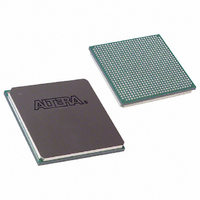EP1S30F780I6N Altera, EP1S30F780I6N Datasheet - Page 24

EP1S30F780I6N
Manufacturer Part Number
EP1S30F780I6N
Description
IC STRATIX FPGA 30K LE 780-FBGA
Manufacturer
Altera
Series
Stratix®r
Datasheet
1.EP1S10F780C7.pdf
(276 pages)
Specifications of EP1S30F780I6N
Number Of Logic Elements/cells
32470
Number Of Labs/clbs
3247
Total Ram Bits
3317184
Number Of I /o
597
Voltage - Supply
1.425 V ~ 1.575 V
Mounting Type
Surface Mount
Operating Temperature
-40°C ~ 100°C
Package / Case
780-FBGA
Lead Free Status / RoHS Status
Lead free / RoHS Compliant
Number Of Gates
-
Available stocks
Company
Part Number
Manufacturer
Quantity
Price
Company:
Part Number:
EP1S30F780I6N
Manufacturer:
ALTERA
Quantity:
996
- Current page: 24 of 276
- Download datasheet (4Mb)
Logic Elements
2–10
Stratix Device Handbook, Volume 1
Dynamic Arithmetic Mode
The dynamic arithmetic mode is ideal for implementing adders, counters,
accumulators, wide parity functions, and comparators. An LE in dynamic
arithmetic mode uses four 2-input LUTs configurable as a dynamic
adder/subtractor. The first two 2-input LUTs compute two summations
based on a possible carry-in of 1 or 0; the other two LUTs generate carry
outputs for the two chains of the carry select circuitry. As shown in
Figure
carry-in1 chain. The selected chain’s logic level in turn determines
which parallel sum is generated as a combinatorial or registered output.
For example, when implementing an adder, the sum output is the
selection of two possible calculated sums: data1 + data2 + carry-in0
or data1 + data2 + carry-in1. The other two LUTs use the data1 and
data2 signals to generate two possible carry-out signals—one for a carry
of 1 and the other for a carry of 0. The carry-in0 signal acts as the carry
select for the carry-out0 output and carry-in1 acts as the carry select
for the carry-out1 output. LEs in arithmetic mode can drive out
registered and unregistered versions of the LUT output.
The dynamic arithmetic mode also offers clock enable, counter enable,
synchronous up/down control, synchronous clear, synchronous load,
and dynamic adder/subtractor options. The LAB local interconnect data
inputs generate the counter enable and synchronous up/down control
signals. The synchronous clear and synchronous load options are LAB-
wide signals that affect all registers in the LAB. The Quartus II software
automatically places any registers that are not used by the counter into
other LABs. The addnsub LAB-wide signal controls whether the LE acts
as an adder or subtractor.
2–7, the LAB carry-in signal selects either the carry-in0 or
Altera Corporation
July 2005
Related parts for EP1S30F780I6N
Image
Part Number
Description
Manufacturer
Datasheet
Request
R

Part Number:
Description:
CYCLONE II STARTER KIT EP2C20N
Manufacturer:
Altera
Datasheet:

Part Number:
Description:
CPLD, EP610 Family, ECMOS Process, 300 Gates, 16 Macro Cells, 16 Reg., 16 User I/Os, 5V Supply, 35 Speed Grade, 24DIP
Manufacturer:
Altera Corporation
Datasheet:

Part Number:
Description:
CPLD, EP610 Family, ECMOS Process, 300 Gates, 16 Macro Cells, 16 Reg., 16 User I/Os, 5V Supply, 15 Speed Grade, 24DIP
Manufacturer:
Altera Corporation
Datasheet:

Part Number:
Description:
Manufacturer:
Altera Corporation
Datasheet:

Part Number:
Description:
CPLD, EP610 Family, ECMOS Process, 300 Gates, 16 Macro Cells, 16 Reg., 16 User I/Os, 5V Supply, 30 Speed Grade, 24DIP
Manufacturer:
Altera Corporation
Datasheet:

Part Number:
Description:
High-performance, low-power erasable programmable logic devices with 8 macrocells, 10ns
Manufacturer:
Altera Corporation
Datasheet:

Part Number:
Description:
High-performance, low-power erasable programmable logic devices with 8 macrocells, 7ns
Manufacturer:
Altera Corporation
Datasheet:

Part Number:
Description:
Classic EPLD
Manufacturer:
Altera Corporation
Datasheet:

Part Number:
Description:
High-performance, low-power erasable programmable logic devices with 8 macrocells, 10ns
Manufacturer:
Altera Corporation
Datasheet:

Part Number:
Description:
Manufacturer:
Altera Corporation
Datasheet:

Part Number:
Description:
Manufacturer:
Altera Corporation
Datasheet:

Part Number:
Description:
Manufacturer:
Altera Corporation
Datasheet:

Part Number:
Description:
CPLD, EP610 Family, ECMOS Process, 300 Gates, 16 Macro Cells, 16 Reg., 16 User I/Os, 5V Supply, 25 Speed Grade, 24DIP
Manufacturer:
Altera Corporation
Datasheet:












